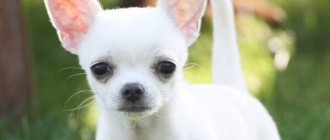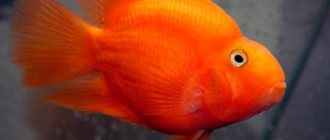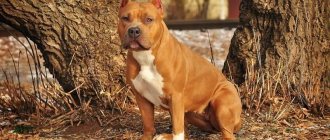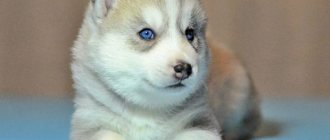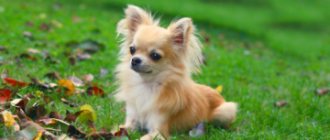Waiting for chicks from budgerigars is the cherished goal of novice breeders. Instincts help birds navigate this path, but there are situations when they cannot do without human intervention. Let us consider step by step the process of the appearance and development of chicks - from the moment of fertilization to the first flight.
Start of incubation
At the age of 8-9 months, the female budgerigar is ready to breed. To stimulate the sexual instinct, birds need an equipped place where they will lay eggs. Budgerigars do not build a nest, so the breeder puts a special house in their cage - a nest box. The expectant mother creates comfort in it: she brings pieces of paper, thin twigs, sawdust. From these materials the bird lays out a kind of nest, a soft bedding.
A few days after fertilization, the female settles into the nest house, preparing to lay an egg. The parrot's belly is noticeably rounded, its tail rhythmically swings up and down in time with its breathing. The female lays one egg per day. The average number of eggs in budgies is 6, in rare cases it is 10-12. The female cannot heat such a large clutch; not all eggs hatch into chicks.
Having laid 2-3 eggs, the female parrot fully sits on them, and from that moment the incubation period begins. After how many days it ends, it will become clear when the first newborn hatches. Normally, incubation lasts 18-28 days. During this period, the bird can leave the nest for a short time to empty its intestines, drink water, and stretch its legs. While the mother is absent, the eggs do not have time to cool to a critical temperature. Periodically, the parrot turns the eggs over, changing their places - thus, the embryos develop evenly.
Mating, laying and incubating eggs
In the wild, animals breed throughout the year, nestling in tree hollows. In captivity, pets need help by building a nest box. It is most advisable to install it after cold winter days, when procreation is also complicated by external seasonal factors.
The house for the future offspring of parrots will take pride of place in the cage, and the female will immediately begin arranging it to her liking. As soon as the design solutions take on a finished form, the period of kissing and mating games begins, which indicates that the spouses are ready for replenishment. It is recommended to mate pets when they reach one and a half years of age, otherwise the cubs risk being premature and sick, or even stillborn.
Usually, from the moment the nest appears, after 14 - 20 days, the first tenant appears in the house. After the second, the female begins to hatch them. A clutch usually contains from 4 to 12 eggs, and their appearance occurs at intervals of one or two days.
The appearance of chicks
The first chick appears in the nest 18-19 days after the start of incubation. You should not watch budgerigar chicks hatching, otherwise the female will become alarmed. The sacrament of birth occurs like this: cracks become visible on the shell, which gradually expand, and then the shell breaks in two. To crack the shell, the chick uses a bone growth on its beak - the so-called “egg tooth”. If the baby is weak, the female will help him break his way out of captivity.
Newborn chick
Important! With high air humidity, the birth process occurs much easier. If the room is too dry, the film shell sticks to the delicate skin, and only the new mother can free the baby.
The birds appear one after another, most often in the same order as the eggs were laid. The number of eggs determines how many days the chicks will hatch. If 4 weeks have passed since the start of nesting, the remaining eggs can be removed - they will no longer hatch into chicks.
"Portrait" from life: birth
So, the female laid several eggs in the nesting house and began to incubate them. After 19 days, the chick hatches from the first egg laid, and after a day or two, so to speak, in chronological order, the rest will begin to appear.
Newborn wavy chicks are born weighing literally 1-1.5 grams and look very unattractive and helpless: their pink-purple body is completely devoid of plumage, the future handsome ones have a disproportionately large head, which their long thin neck cannot even hold, and weak legs . Birds don't see or hear.
Reproduction of wavy birds.
Appearance of newborn chicks
A newly hatched chick looks completely different from its parents. You can’t immediately say that someday this helpless, naked and blind cub will become a beautiful wavy. In the first hours the baby weighs only 1-2 grams. He has no feathers, only individual fluffs. The legs and neck are thin, and the head, on the contrary, is disproportionately large. Because of this, the chick cannot move, it only fidgets a little, but over time it will gain strength.
Stages of growth of a parrot chick:
- After a week, vision and hearing appear.
- The egg tooth falls off.
- Movements become meaningful, the chick has better control of his body.
- Body weight is rapidly increasing.
- “Columns” of feathers grow on the head, back and wings.
- At three weeks the weight of the chick reaches approximately 40 grams.
After one month, the bird is practically formed in appearance. The body is covered with feathers, the tail is long, the wings are full, ready for the first flight.
What vitamins should be given to a parrot?
One of the important elements for the full development of poultry is calcium. It makes up about 1.5% of the bird’s weight and is responsible not only for the formation of bone tissue, but also for blood clotting, proper metabolism, the functioning of the nervous system, fetal development and shell formation.
How well calcium is absorbed depends on a helper vitamin called D3. It regulates the process of calcium absorption in the stomach and controls the production of hormones that help remove excess nutrients. Vitamins for parrots kept in captivity must include D3, because domestic birds most often lack it. This vitamin is produced during sun exposure. Since domestic parrots are practically deprived of this opportunity, they can only get it from special supplements.
Parrots also have an urgent need for vitamin A. This organic substance affects almost all body systems: cardiovascular, digestive, and hormonal. When listing vitamins that are vital for a parrot, veterinarians always name vitamin A. Because it is involved in many processes in the development and life of the bird.
During molting, during the period of reproduction and the occurrence of certain diseases, the amount of ascorbic acid produced in the bird’s body sharply decreases. Its deficiency contributes to a decrease in immunity and, as a result, frequent illnesses. To compensate for the lack of vitamin C, birds are given vitamins for parrots, which contain this organic substance.
If you have a bird and want to seriously breed it in the future, be sure to give it vitamin E. This substance affects reproductive function and guarantees the appearance of healthy offspring. The amount of vitamin E in the body determines the pet’s appetite, its energy, and even coordination of movements.
When talking about what vitamins should be given to a parrot, one cannot fail to mention B vitamins. This category of organic substances does not accumulate in the body, and therefore their reserves must be replenished daily. If this is not done, you can forget about health, beautiful plumage, strong offspring and easy learning. I would like to talk in more detail about the significance of one of the most important vitamins of the group.
Caring for budgerigar chicks
Taking care of children is the task of feathered parents. The mother warms and protects the offspring, turns them over, feeds them, and cleans them. At this time, the male continues to feed his partner, as she tries not to leave the nest.
The owner is required to provide comfort for adult budgies: clean the cage in a timely manner, add food and vitamins, and change the water. However, the breeder's responsibility does not end there. Sometimes you have to take on the functions of a nursing mother if the female is unable to raise the chicks - she gets sick or abandons the nest.
What to feed the chicks
From the first hour of life, the bird needs liquid food. Her body is not yet able to accept and digest dry food. A novice breeder has a reasonable question: what to feed the budgerigar chicks if they can’t even hold their heads up yet. Two feeding options are possible: a natural method, when the female produces provisions for children in her crop, or artificial - this is feeding through a tube, if maternal participation is impossible.
Natural feeding
The first food for chicks is crop milk, which appears in the female as a result of digestion of dry food. It looks like a yellowish mucous substance. The female regurgitates this liquid and feeds the babies from beak to beak. The feeding process takes almost all the time, but there is enough milk for everyone.
Further, when the growing cubs require more nutrition, the food in the female’s crop does not have time to be digested to a liquid consistency. The young animals receive softened grain in the same way - from the mother’s beak. At some stage, the father budgerigar joins in feeding the chicks and takes care of them along with the partner.
Artificial nutrition
When the natural course of events is disrupted, the responsibility for caring for the parrots passes to the breeder.
Reasons for transferring chicks to artificial feeding:
- The female abandons the nest or dies.
- Aggression towards cubs on the part of parents.
- Forced isolation, quarantine.
- Weak body.
- Large brood size.
- The female's readiness for new nesting.
Attention! The chick can live without food for the first 12 hours, during which time it is necessary to resolve the issue of feeding.
Every breeder should know how to feed a budgerigar chick that has lost its mother. If more than one pair of parrots lives at home, you can offer the babies to another female. Otherwise, you will have to save the situation yourself. To do this, you will need a cardboard box lined with sawdust or soft cloth. Newborns are placed there, and a homemade heating pad is also placed.
The next step is to prepare the feeding tube. It is made from a syringe and a flexible tube measuring 10 cm by 2.5 mm. The edges of the tube are processed, then food is drawn into the syringe and the tube is placed on the protrusion of the syringe. Nutritional paste is diluted from a dry mixture for chicks.
A homemade catheter is lowered into the open beak to a sufficient depth so that the mixture goes directly into the crop. Lightly press the piston and release a small portion of food. The chicks are fed this way every hour for the first 3-4 days; a longer break is possible at night. In the future, it will be enough to offer food once every two hours, but in an increased portion. Budgerigars grow very quickly, and at the age of 3 weeks they can already independently peck food from a spoon.
Mom's diet
When a female incubates eggs, she spends a lot of energy heating the clutch, and her body is exhausted. In order for the mother to produce adequate nutrition for the parrots, she herself needs to be well fed.
The bird's diet should include:
- sprouted wheat grains;
- milky oats;
- fresh greens.
Once or twice a week you can give the bird chopped egg white. Food of animal origin is rich in protein, which is necessary for the growth and development of chicks.
Creating a microclimate
While the budgerigar chicks are not overgrown with fluff and feathers, they need their mother's warmth. For the first four days, the offspring hides under the wings of the female and warms up from her body. As the young grow, they get used to a gradual decrease in temperature to 30-32ºC. Brooders - heating houses - help maintain the temperature. If it is not possible to keep the room warm or the chicks are left without a mother, you can use such a house.
Brooder
Nest care
The female and her newborns should not be disturbed for 10 days, and after this period it is necessary to clean the nesting house. The young animals are transplanted into a box, and their mother is also sent there. All waste products - droppings, leftover food, garbage - are removed from the house. Dirty litter should be thrown away and fresh sawdust put in its place.
If the parrots' feet are heavily soiled with droppings and stuck food, they need to be washed. This is done like this: pour warm water into a plastic container, and then take the chicks one by one and wash their paws. After washing, carefully blot the feet with a paper towel.
Conditions for reproduction
It is advisable for a breeder who decides to breed budgerigars to have several pairs. This will allow, in case of possible problems with the chicks or clutch, to save the offspring and preserve the health of the adults.
Right to breed
Breeding budgerigars at home is not regulated by law; anyone can do it. But to officially register his activities, the breeder must have a license, which is issued by the Society of Bird Lovers. A person needs to confirm that he has knowledge about the breeding and maintenance of budgerigars.
It is the responsibility of veterinarians to check birds for psittacosis. This viral infection can infect not only animals and birds, but also humans. If the test does not reveal this disease, the owner receives official permission for breeding. He is given permanent rings containing information about the breeder, the serial number of his bird, the date and time of registration. During disease outbreaks, this makes it easier to track the location of parrots.
Choosing the right pair
To get healthy offspring, you need to organize the correct selection of a pair of wavy birds. They must be from different parents to prevent the development of genetic diseases in the chicks. How to understand that a male and a female are suitable for each other?
Both parrots should be healthy, active and well-fed. Weak or elderly birds often lay unfertilized eggs. Puberty of females occurs in the second year of life. In males, this period begins a little earlier, from ten months of age. The peak of fertility in wavy birds is observed at the age of 2–4 years. Although parrots breed up to 10 years old.
You might be interested in: Where do parrots live: habitat of popular species of parrots
This is interesting! A budgerigar remains attached to its partner for life. Without mutual sympathy, reproduction does not occur.
Suitable period for breeding
The optimal time for breeding wavy plants at home is the summer months, from June to September. This is the part of the year when parrots get enough sunlight and vitamins. In other periods, they may be weakened due to a deficiency of substances necessary for the body. And this can affect the health of the offspring.
If breeding of parrots is planned for the winter or spring months, the birds must be provided with enhanced nutrition with fresh herbs. At least 14 hours of daylight are required; illumination with a special lamp is allowed. The air temperature must be at least 23 degrees.
Parrot mating process
What conditions need to be created
In addition to selecting a pair, the breeder should think about creating conditions for reproduction. To do this, you need to choose a cage that is suitable in size for the birds. The size of the housing for one pair of wavy plants is 80 cm in length, 40 cm in height and 35 cm in width. If one cell contains several pairs, then these dimensions should be larger.
Females need houses with nests where they can hatch their offspring. When the parrot begins to lay eggs, the cage is placed in a quiet corner so that the bird is not disturbed. The room temperature must be maintained at least 20 degrees. At the same time, heat and stuffiness should not be allowed, as this poses a threat to the embryos.
Feeding parrots during the breeding season
The budgerigar's menu includes grains and seeds, as well as fruits and vegetables.
To stimulate the sexual instinct, the diet should contain the following foods:
- low-fat cottage cheese;
- greenery;
- sprouted grains;
- egg white;
- special mineral supplements.
When a female parrot lays eggs, she requires an increased diet. Products high in vitamin E are very useful. Experienced breeders advise feeding their pets a mixture of cottage cheese, eggs, carrots and sprouted grains.
You might be interested in: How to choose a budgie: preparation, choice of bird, adaptation
It is important to know! Obese or underweight birds are not suitable for breeding. The pair must be fattened before breeding, but not excessively
Development of a budgerigar chick
The main stages of growing up a budgie:
- Newborn. Lasts from the first to the tenth day. The period ends with the loss of the egg tooth, the appearance of vision and hearing. Babies begin to raise and hold their heads and sit down on their paws.
- Second decade of life. The rudiments of feathers grow, body weight increases to 40 g.
- Third decade. The flight and tail feathers grow back and a wavy pattern appears. The cere is painted a certain color, depending on the sex.
After reaching the age of one month, the young individual looks like an adult parrot. The chick in it is revealed by its carefree character and dark eyes without rims. At this time, the parrot tries to take off, but cannot coordinate its movements and often falls.
Important point! The first flight from the nesting house is dangerous for a bird due to injury, so before the experiments begin, the chicks need to be moved to a separate housing.
Criteria for choosing a cage
When approaching the question of choosing a home for a bird, consider the following factors:
- cell shape. A rectangular one with a flat roof would be ideal. It makes it easier for the parrot to move around and it will be easier to hang toys.
- size. Remember, the bird must freely straighten its wings and move around its home.
- twigs. To prevent your parrot from sliding along the walls, try to purchase a cage with twigs arranged horizontally.
- care and cleanliness. For ease of cleaning, choose a cage with a simple design. You need to clean every day, and do a general cleaning every month. You can disinfect the cage with chamomile infusion or wormwood infusion.
- safety. To prevent your bird from breaking its leg between the bars, buy a cage with a flat bottom.
How to find out gender
In budgerigars, gender is determined by the color of the wax - a growth above the beak. It is possible to find out what sex the chick is no earlier than four weeks of age. Moreover, it will not be possible to do this the first time, since at different times of the day the cere of a budgerigar chick can change color.
The following colors are typical for boys:
- light purple in a representative of natural color;
- purple or pink in the selection specimen.
In the early period, the boy is identified by bluish rims around the nostrils or the absence of them. It is known that in girls these rims are white, and the wax itself is blue.
After the first moult, it is much easier to find out the sex of the bird: females have a beige or brown wax, while males have a blue one. And the older the individual, the brighter the shade.
There are several other methods for determining sex: behavioral, based on feather color, genetic, DNA analysis. Experienced breeders know how to determine the sex of a parrot by external signs, without resorting to complex laboratory diagnostics.
Recommendations for beginning ornithologists
To ensure that artificial nutrition causes fewer problems, you should follow some tips:
- A single serving of food for wavy is from 3 to 5 ml; you should not cook more: the food turns sour and causes digestive problems.
- There is no need to supplement the birds with water: the diluted mixtures contain a sufficient amount of liquid.
- From the age of seven days, fruit juices are introduced into the diet: thanks to them, the immune system is strengthened and growth is accelerated.
- Mineral food is required in the cage for the proper formation of the bird's skeleton. You can give coarsely grated chalk or eggshells. A lack or excess of minerals impairs development, growth, and sometimes leads to illness and even death.
- Grain mixtures are introduced from the moment the birds begin to sit on a perch or perch on the owner’s finger. They cook semi-liquid or thick porridge, offering a choice.
With proper care and feeding, your pets will have a long, happy, and fulfilling life. After studying all the recommendations and advice, you can save the life of the little chick. You can be sure: artificially fed birds are more tame and trainable, they begin to talk better and faster than those raised in a nest with their family.
How to tame a chick
Raising a budgie should be done after it is removed from its parents. For a parrot, a chick is the most precious thing in life. If you try to tame the chick earlier, the female will rush to protect it. In addition, at a young age, the wavy is attached to its mother; it doesn’t need anyone else.
When small pets take up a new place of residence, it is easier to find an approach to them. At first, try to appear near the cage only to change water and food. Watch how the birds react to you. Having noticed that the birds get used to it and behave calmly in the presence of a person, begin to address them kindly. Offer your parrot a piece of fruit on a skewer.
After some time, you can move on to closer communication. Open the door and extend your palm with the treat on it. The emboldened chick will fly up and sit on your hand. Just don’t scare him, don’t make sudden movements.
Do not let your budgies out of their cage while they are still small. They will be afraid to return on their own; they will have to catch them. Let the first flight take place when the bird learns to sit on your shoulder. In this case, the taming process is not threatened.
The chick died. Why?
It always hurts a lot when you find a dead chick in a nest. Nothing seemed to foretell trouble. There are several reasons for the death of newborns:
- lack of food;
- hypothermia;
- underfeeding or mother abandoning offspring;
- aggressive attitude of one of the parents;
- an inexperienced mother could accidentally crush the baby;
- attack by a female ready for a new clutch.
Why can a parrot die?
A person who is going to seriously engage in breeding budgies at home must realistically imagine all the difficulties and pitfalls of this business in order for it to be successful.
Causes of sudden death of chicks
Newborn chicks are very fragile, they can die unexpectedly and suddenly. Many chicks inherit genetic pathologies from their parents that are incompatible with life.
Other causes of infant mortality in budgerigars:
- the female does not have time to fully feed the entire brood;
- the weak chick was crushed by the mother out of inexperience;
- the female abandons the nest after incubating the eggs;
- aggression of the mother or father towards the cubs;
- unsuccessful flight from the nesting house.
There is constant opposition between chicks of the same brood - competition for food, warmth, and better conditions. If an individual is weakened, it can simply be crushed in a crowd.
Budgerigars have offspring quite often - about 2-3 times a year. These birds readily breed in captivity. The feathered parents cope well with their natural role, but in difficult situations the breeder is always ready to help.
We are growing by leaps and bounds
Hatched from the egg and went straight to his mother.
However, it is necessary to reassure the future owners of the wavy birds: they will not be like this for long. Around the 6th day, their egg tooth will fall off and they will be able to lift and hold their head up for a while. And after about a week or a little more, their eyes will open, the babies will even try to sit up on their own. After another couple of days, stumps—the “embryos” of feathers—will begin to appear on the back and head.
By the 11th–13th day, the birds are completely covered with fluff.
At two weeks of age, young wavy animals already weigh 10 times more than at birth.
Observations show that chicks grow most quickly in the first two weeks. And when the down and feather cover begins to form, their growth slows down somewhat.
The 17-18th day is marked by the fact that the flight feathers grow significantly, and the bodies of the chicks themselves are covered with stumps of covert feathers, which is why the birds acquire a resemblance to hedgehogs. By the end of the third week, real feathers appear on the back, head, and wings.
There is no need to panic, seeing that young parrots at this time become timid and immediately start squeaking when someone approaches the cage - this is a very crucial moment in their life.
On the 20th day, it becomes possible to determine what color the parrot will be.
Tail and flight feathers grow significantly on the 24th–26th day. And the one-month-old chicks have almost completely acquired their plumage and, with normal care, gain maximum weight.
When the chicks reach the age of 35 days, they can already pass for adult parrots, except that their movements are not yet entirely confident.
When does a budgie start flying? At 40 days, babies make their first attempts to fly.
It is interesting to watch how the chicks gain weight as they grow older. If immediately at birth, as already mentioned, they weigh 1-1.5 g, then already on the first day their weight doubles - 2-3 g. And then it looks something like this, given that the first number indicates normal weight, and the second is standard:
- The first feathers. third day - 5-6
- 6th — 10-11
- 9th – 17–20
- 15th – 31–45
- 20th – 39–52
- 24th - 42–57
- 30th – 40–45
Historical reference
The first information about budgerigars appeared at the beginning of the 19th century. The origin of budgerigars dates back to Australia. In 1840, budgerigars were first brought to London Zoo. Soon the budgerigar appeared in France, Belgium and Germany. Thus began the mass capture and export of these birds from Australia. Cages containing hundreds of thousands of birds were transported by ship to Europe. Many birds died during transportation.
But after some time, information appeared about their successful breeding in captivity. Soon, budgerigars lived almost throughout Europe. Back then it was an expensive pleasure and only wealthy people could afford to purchase an exotic bird. By 1860, many zoos in Europe already had their own populations of these birds.
Due to the massive and unregulated trapping of parrots, there has been a sharp decline in the number of budgerigars. Due to the large-scale and cruel trade, in 1894 the Australian government passed a law banning the export of all species of birds living in the country. Now the number of budgerigars in captivity significantly exceeds the number of these exotic birds living in nature.
Parrots were brought to Russia from Europe. Soon they began to be bred at the Moscow Zoo, and later at home. The greatest interest in these birds has arisen because of their ability to imitate human speech. Now these birds are massively popular among caged birds.
